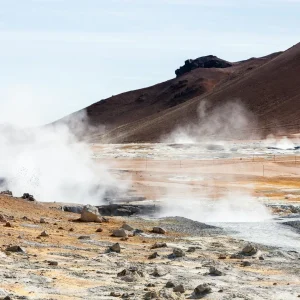In today’s era of climate change and environmental consciousness, the quest for sustainable energy sources has become paramount. One of the most significant players in this quest is hydroelectric power. Harnessing the power of water to generate electricity, hydroelectric power has emerged as a key player in reshaping energy landscapes worldwide.
Facts About Hydroelectric Power
Before delving into the details, let’s explore some fascinating facts about hydroelectric power:
- Hydroelectric power is the largest source of renewable electricity generation globally, accounting for around 16% of total electricity production.
- The world’s first hydroelectric power plant was built in 1882 on the Fox River in Wisconsin, USA.
- China is the leading producer of hydroelectric power, with the Three Gorges Dam being the world’s largest hydroelectric power station.
- Hydroelectric power is highly efficient, with some plants achieving efficiency rates of over 90%.
| Fact | Details |
| Largest Source of Renewable Energy | Hydroelectric power accounts for approximately 16% of total global electricity production. |
| First Hydroelectric Power Plant | The world’s first hydroelectric power plant was constructed in 1882 on the Fox River, USA. |
| Leading Producer | China leads the world in hydroelectric power production, with the Three Gorges Dam being the largest hydroelectric power station. |
| High Efficiency | Hydroelectric power plants can achieve efficiency rates exceeding 90%. |
What to Know Hydroelectric Power
Hydroelectric power works by harnessing the kinetic energy of flowing water to generate electricity. This process involves damming a river to create a reservoir, which stores water at a higher elevation. When water is released from the reservoir, it flows through turbines, causing them to spin and generate electricity. The amount of electricity produced depends on factors such as the volume of water flow and the height of the dam.
One of the significant advantages of hydroelectric power is its reliability. Unlike solar or wind energy, which are dependent on weather conditions, hydroelectric power can be generated consistently, providing a stable source of electricity. Additionally, hydroelectric power is clean and produces minimal greenhouse gas emissions, making it environmentally friendly compared to fossil fuels.
However, hydroelectric power also has drawbacks. The construction of dams and reservoirs can have significant environmental impacts, including habitat destruction, altered water flow patterns, and displacement of communities. Additionally, droughts can affect the availability of water for hydroelectric generation, leading to fluctuations in power output.
Conclusion
In conclusion, hydroelectric power plays a crucial role in reshaping energy landscapes and promoting sustainable development. Its ability to provide reliable, clean energy makes it an essential component of the renewable energy mix. However, it’s essential to balance the benefits of hydroelectric power with its environmental and social impacts to ensure responsible energy development.
FAQs
Is hydroelectric power renewable?
Yes, hydroelectric power is considered renewable because it relies on the natural flow of water, which is continuously replenished by the water cycle.
What are the environmental impacts of hydroelectric power?
The construction of dams and reservoirs can lead to habitat destruction, altered water flow patterns, and the displacement of communities. Additionally, reservoirs can emit greenhouse gases such as methane.
Can hydroelectric power plants operate during droughts?
The availability of water for hydroelectric generation can be affected by droughts, leading to fluctuations in power output. However, some plants have reservoirs that can store water for use during dry periods.
With its ability to provide reliable, clean energy, hydroelectric power is poised to continue reshaping energy landscapes for years to come.




